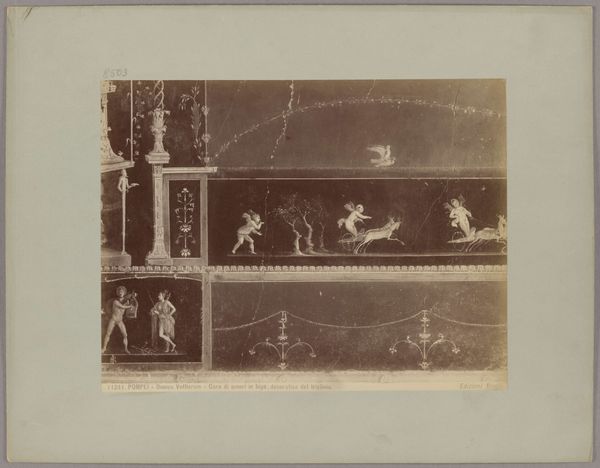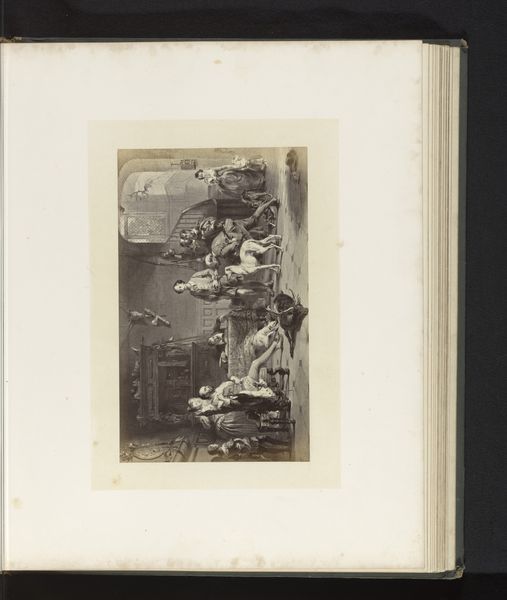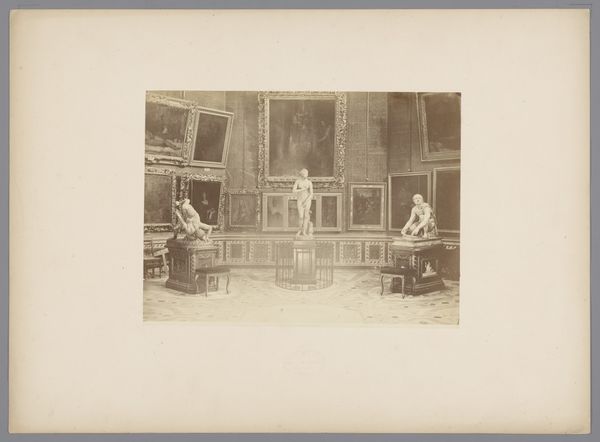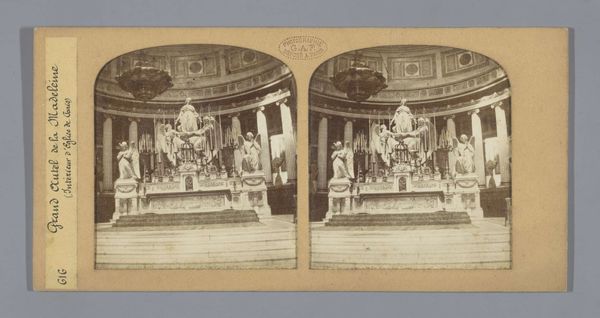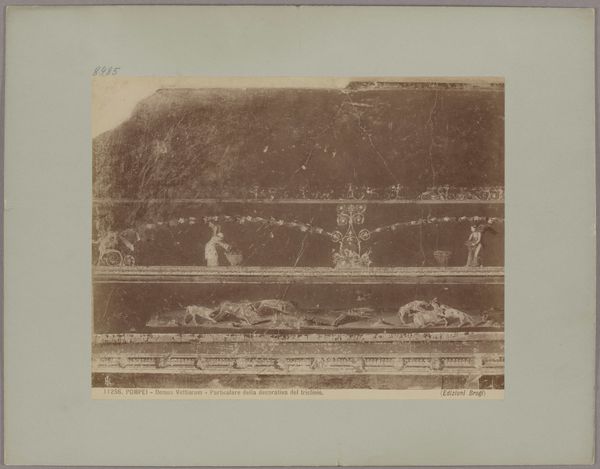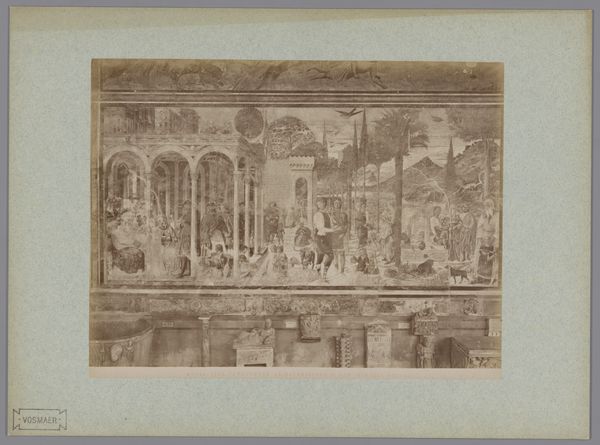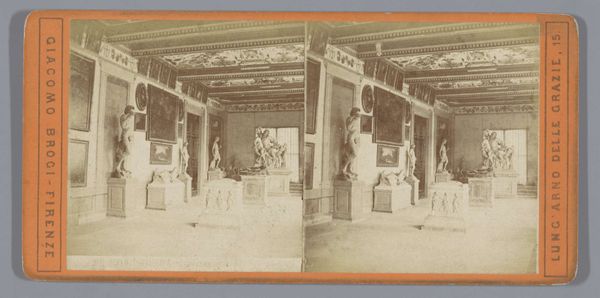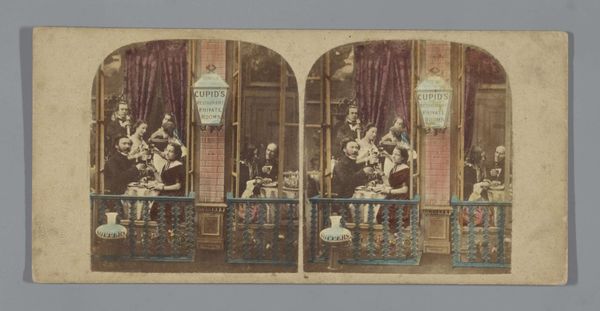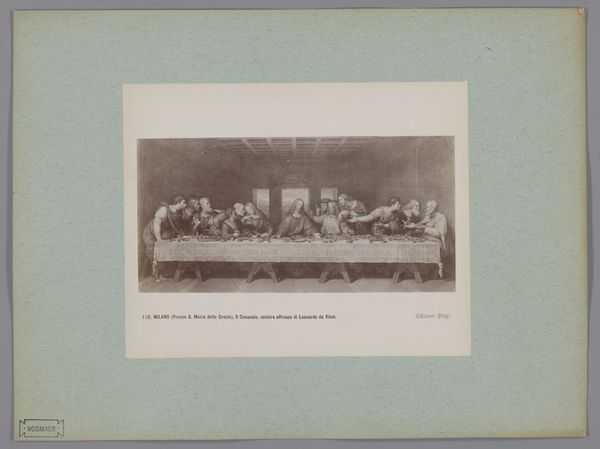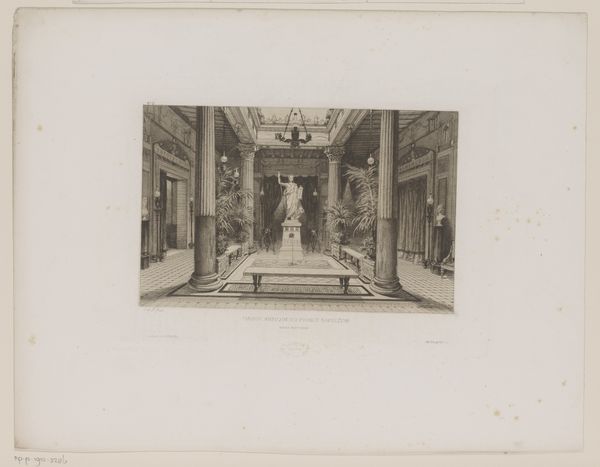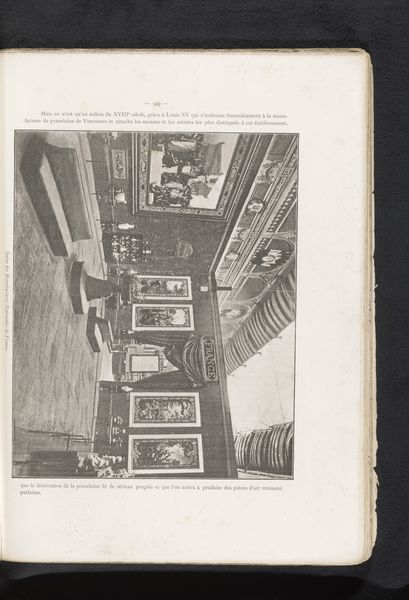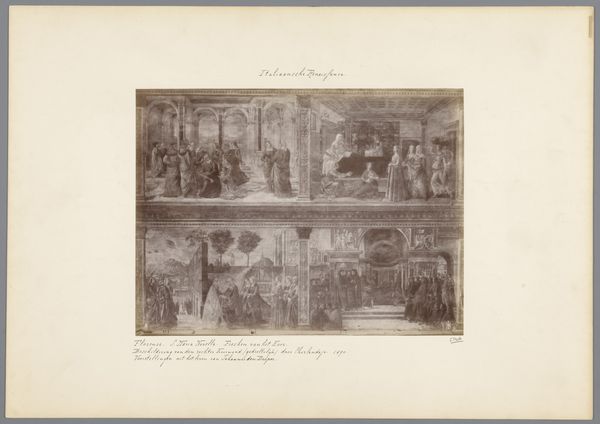
Pompeii_ Domus Vettiorum, Money lovers, triclinium decoration, No. 11239 c. 1880 - 1890
0:00
0:00
albumen-print, paper, fresco, photography, albumen-print
#
albumen-print
#
16_19th-century
#
figuration
#
paper
#
fresco
#
photography
#
ancient-mediterranean
#
genre-painting
#
albumen-print
#
angel
Copyright: Public Domain
Curator: Oh, my, look at the playful narrative captured in this albumen print, “Pompeii, Domus Vettiorum, Money Lovers,” by Giacomo Brogi, sometime between 1880 and 1890. It is a view into a fresco decoration from a Roman triclinium. What's your initial take? Editor: Intriguing. The sepia tones give it this ghostly feel, like looking at something once vibrant now faded with time. A whole wall animated by cherubs. What an interesting photograph. Curator: Indeed, Brogi invites us to witness not just art, but art *being* unearthed, offering a unique vantage point, doesn't he? I mean, think of the labor to produce the frescoes in the first place, then to preserve them. Editor: Absolutely. These little cupids performing everyday tasks, almost industrialized... there's this weird contrast between their mythological associations and these quite earthly labors of money-making, pressing grapes, striking coins and weighing precious metals. Curator: They're little agents of commerce, it appears! But there's such whimsy in portraying the divine as tradespeople. The composition of these frescoes must have influenced, maybe even challenged, the separation of high and low art back in its own day. Editor: And now, reflected again through the technology of photography – multiple steps of production removed from the hand of the original artisan. Did Brogi himself get his hands dirty? Who dug this out? What tools did they use? Curator: I don’t know these things. Maybe it is the anonymity of these little frescoed figures that speaks to me. They are not heroes or gods in the classical sense, but working cherubs in someone’s private space. It is like stumbling upon a long-lost secret diary. Editor: Precisely. This isn't just an image of wealth, it's an artifact of labor – someone mined those pigments, mixed that plaster, painted each tiny cupid. Seeing it through this lens, it ceases to be merely decorative and starts telling stories about the ancient system of making and distributing goods. Curator: Ultimately, this albumen print serves as a time capsule, doesn't it? A photograph documenting the artistry and labor of a civilization frozen in time. I find that to be incredibly captivating, personally. Editor: And for me, thinking about how the modern labor that this image documents – its preservation and duplication, for instance – informs the cultural values we’ve invested in this classical relic today.
Comments
No comments
Be the first to comment and join the conversation on the ultimate creative platform.
